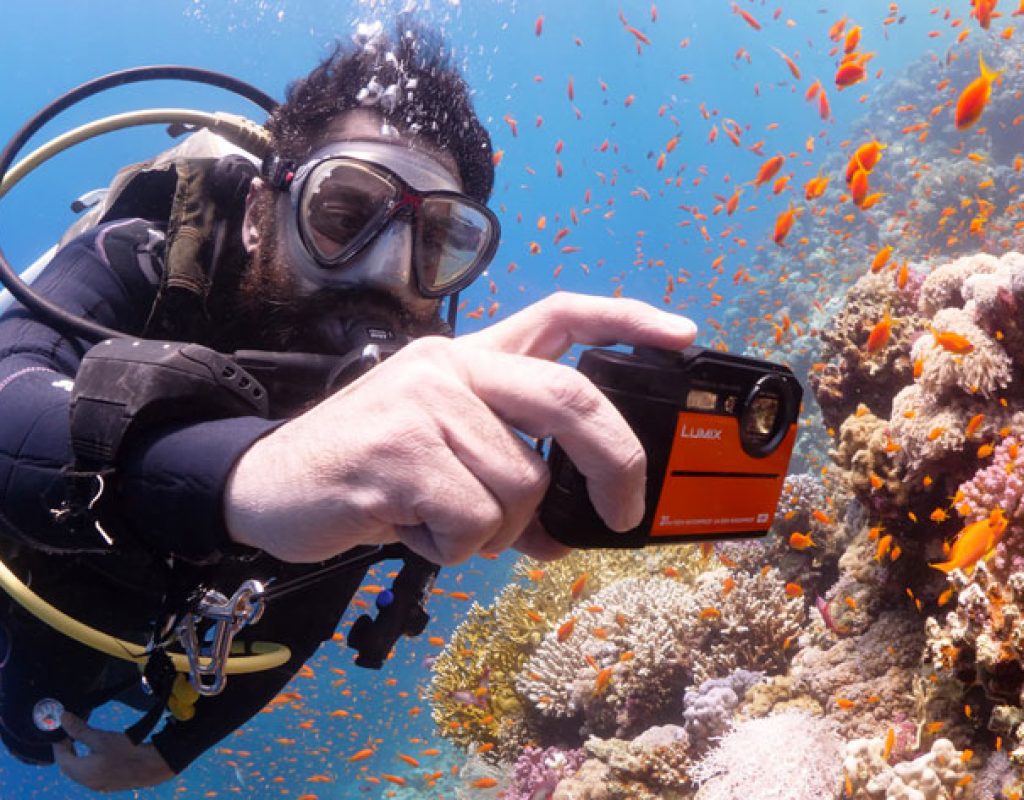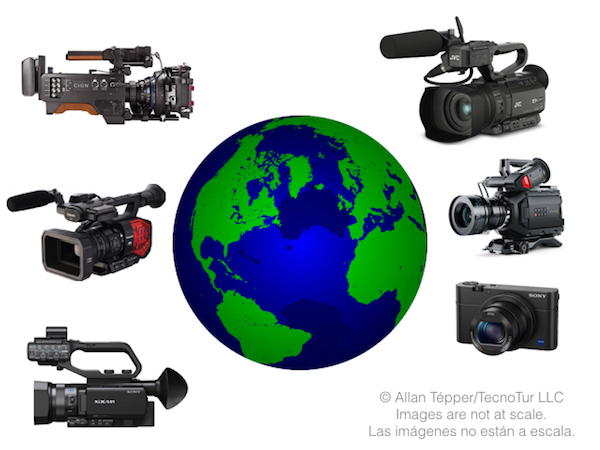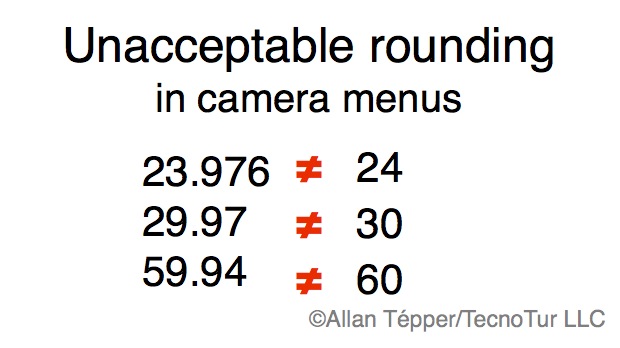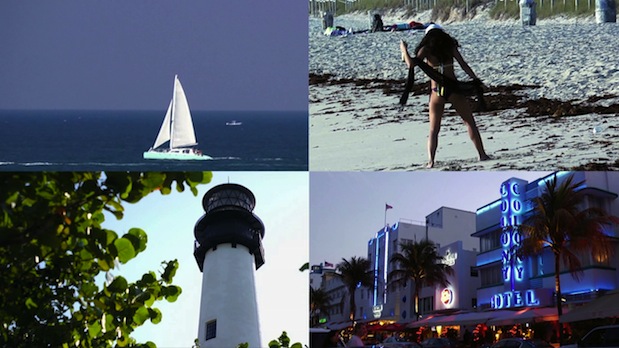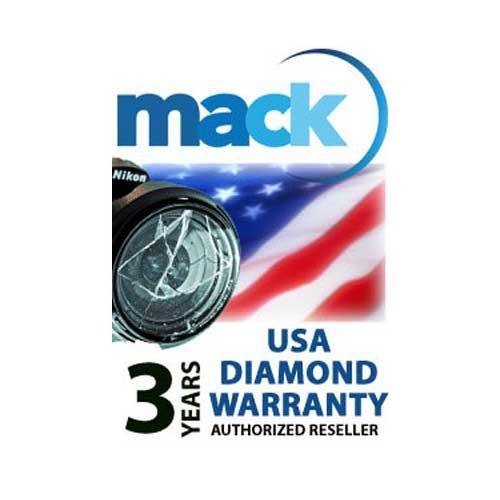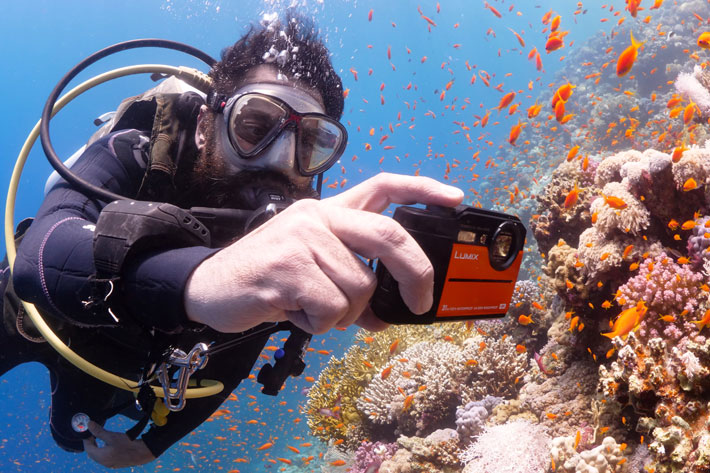
Thanks to José Antunes (who also writes for ProVideo Coalition magazine), I became aware of this new pair of underwater 4K UHD cameras which cost ±US$450 and both have a viewfinder and an inboard stereo microphone. José did a great job of introducing them (link ahead), so what I will do is explain the extent that the DC-FT7 version is a worldcam and why that is a better pick than the segregated DC-TS7, even if we have to import it to the US.
https://youtu.be/5MLdQKI6DSM
Framerates included in the segregated US version
According to both Panasonic’s US and online authorized dealer websites, the segregated US version (Panasonic Lumix DC-TS7) only includes the following framerates:
- 3840x2160p: 29.97 fps (which Panasonic sadly rounds to “30” in marketing materials), and 23.976 fps (which Panasonic sadly rounds to “24” in marketing materials. I don’t know yet regarding the menu.)
- 1920x1080p: 59.94 fps, 29.97 fps (which Panasonic sadly rounds to “60” and “30” respectively in marketing materials. I don’t know yet regarding the menu.)
- 1280x720p: 29.97 fps (which Panasonic sadly rounds to “30” in marketing materials. I don’t know yet regarding the menu.)
Framerates included in the worldcam version (outside of the US)
According to both Panasonic’s UK and Spain websites (after visiting to those links, you must then click on SEE ALL SPECS or VER TODAS LAS ESPECIFICACIONES, respectively), the worldcam non-US version, known as Panasonic Lumix DC-FT7, fortunately includes all of the above framerates, plus the missing 25p and 50p framerates (50 fps only in 1080p, just as 59.94 fps only in 1080p). In the next section, we’ll review the advantages of having all of them.
Why we should only use worldcams
Back in 2015, I published an article called Why we should only use worldcams (illustrated above). Here is a summary of it, to understand why we are much better served with the Panasonic Lumix DC-FT7, even if it means importing it from outside of the United States or purchasing it from a US dealer, which acquires it somehow. Ahead, I’ll also explain how to mitigate both warranty and electrical power issues.
Defining the word worldcam
I define a worldcam as a camera that offers all possible framerates, at least in HD and (if available) in 4K. Unlike completely segregated cameras —where you absolutely must buy a separate camera to shoot and record 25p and 29.97p, worldcams fortunately offer both in the same camera. They often also often offer the high framerates of 50p and 59.94p (at least in HD), and they may also offer 23.976p and in some cases, exact 24.000p too,
although many camera manufacturers unfortunately round the non-integer ones to the closest integer in the menus, as covered in Why I pardon rounding of shutter speeds in camera menus, but not framerates! (illustrated above).
What’s a segregated camera and why do they exist?
A segregated camera is one which is intentionally designed to prevent use of certain video formats and/or framerates in certain regions of the world. Originally, in the days of analog PAL and NTSC tube cameras and camcorders, there was a legitimate and natural reason for manufacturers to create segregated cameras, because many of the key components were indeed different among those versions. However, that changed when digital camcorders started to use sensors that could remap the use of pixels of the identical same sensor even for standard definition NTSC and PAL. Although there may have been some prior one, the very first camcorder I ever encountered in 2003 that had that potentiality was the Sony DSR-PDX10, a camcorder which could record either on DVCAM tape or consumer Mini DV (DV25 códec) tape and also offered balanced XLR audio inputs. Back then,I researched and discovered that both the segregated PAL and segregated NTSC versions of the DSR-PDX10 shared the same sensor. However, to my knowledge, Sony never offered a worldcam version of that classic DSR-PDX10.
The first time I heard of an offer to upgrade a camera to worldcam was when Canon did so for the XL-H1 series as well as the XH, XF, and XA (XA10 excluded) series HD camcorders for US$500 in the US and it required sending in the camera and waiting a few days. In the US, this Canon upgrade unlocked the previously inaccessible 25 and 50 fps in the US versions. In Europe, it added the previously inaccesible 23.976, 29.97 and 59.94 fps to the segregated European version. Later, Sony did something similar with its third-generation HDV camcorders, the HVR-S270, HVR-Z5 and HVR-Z7, as I covered in February 2009. This Sony upgrade also required sending the camera, but cost only US$300 including return freight from Sony to the user. Later, in December 2011, Sony announced the upcoming free firmware update to the FS100 to make it worldcam. Previous to that, some higher-priced Sony HD professional cameras including the HDCAM, HDCAM-SR, XDCAM-EX, and XDCAM-HD had all been shipped as worldcam automatically and without extra charge. More recently, some consumer Sony cameras like the DSC-RX100 IV and professional ones like the PXW-X70 were shipped as worldcam automatically at no extra charge. This has been the case with JVC since its HDV cameras (in HD mode) and now continues with its latest GY-HM170 and GY-HM200.
The only remaining reason for camera manufacturers to offer segregated cameras is to prevent grey marketing. However, many camera manufacturers are finally understanding that user needs weigh more than their antiquated distribution patterns, although they still seem to make the decision model-by-model.
Are worldcams identical wherever they are purchased worldwide?
The 100% worldcam cameras themselves are identical. However, their geographic warranty coverage may vary (except with models that are sold with a worldwide warranty); the AC power plug may vary (if one comes included with the camera); the default settings in the menu may vary, and bundled accessories and software may vary. If there is a printed operator’s manual, the language(s) printed may vary too.
Why are we better off with worldcams?
With a worldcam, you can be hired to shoot by and for a foreign organization that requires a framerate not available in segregated models sold in your country.
I have seen several instances when either raw footage or a complete project needs to be shot or produced at 25p in the US for European distribution. One case is documented in this article: Panasonic AF100 joins forces with Sony encoder for 25p Euro spot in Miami (illustrated above). It is terrible not to be able to accept a foreign video assignment in your own hometown just because your segregated camera prevents it. In fact, that also applies to editing monitors, as I covered in Choose a video monitor for editing & connect it the best way. Although it is true that standards conversion in professional editing systems is simpler, faster and cleaner than ever before, that should always be a last resort, not something you do in ideal conditions. Once you are prepared with a worldcam, you can then offer your services to people throughout the world without reservation.
Image credit
The globe used in the worldcam graphic is in the public domain per Wikipedia Commons, first uploaded by Augiasstallputzer.
Dealing with warranty and power issues with an imported camera
Many extended warranties can be purchased in the US for a reasonable price.
For example, the Mack Diamond 3 Year Warranty For Cameras & Camcorders Up to US$500 currently costs under US$38 (Amazon link).
Nearly all camera chargers/power supplies are dual voltage nowadays, so (after verifying that), you’ll only have to replace the mains cable, which generally costs well under US$10.
Link to José Antunes’s article
Here is a link to José Antunes’s article: Lumix TS7: a pocketable 4K compact for underwater video.
Upcoming articles, reviews, radio shows, books and seminars/webinars
Stand by for upcoming articles, reviews, and books. Sign up to my free mailing list by clicking here. Most of my current books are at books.AllanTepper.com, and my personal website is AllanTepper.com.
Si deseas suscribirte a mi lista en castellano, visita aquí. Si prefieres, puedes suscribirte a ambas listas (castellano e inglés).
Suscribe to his BeyondPodcasting show at BeyondPodasting.com.
Subscribe to his Tu radio global show at Turadioglobal.com.
Subscribe to his Tu salud secreta show at TuSaludSecreta.com.
Subscribe to his CapicúaFM show at CapicúaFM.com.
Save US$20 on Project Fi, Google’s mobile telephony and data
Click here to save US$20 on Project Fi, Google’s mobile telephone and data service which I have covered in these articles.
FTC disclosure
No manufacturer is specifically paying Allan Tépper or TecnoTur LLC to write this article or the mentioned books. Some of the other manufacturers listed above have contracted Tépper and/or TecnoTur LLC to carry out consulting and/or translations/localizations/transcreations. Many of the manufacturers listed above have sent Allan Tépper review units. So far, none of the manufacturers listed above is/are sponsors of the TecnoTur , BeyondPodcasting or TuNuevaRadioGlobal programs, although they are welcome to do so, and some are, may be (or may have been) sponsors of ProVideo Coalition magazine. Some links to third parties listed in this article and/or on this web page may indirectly benefit TecnoTur LLC via affiliate programs. Allan Tépper’s opinions are his own.
Copyright and use of this article
The articles contained in the TecnoTur channel in ProVideo Coalition magazine are copyright Allan Tépper/TecnoTur LLC, except where otherwise attributed. Unauthorized use is prohibited without prior approval, except for short quotes which link back to this page, which are encouraged!

Filmtools
Filmmakers go-to destination for pre-production, production & post production equipment!
Shop Now